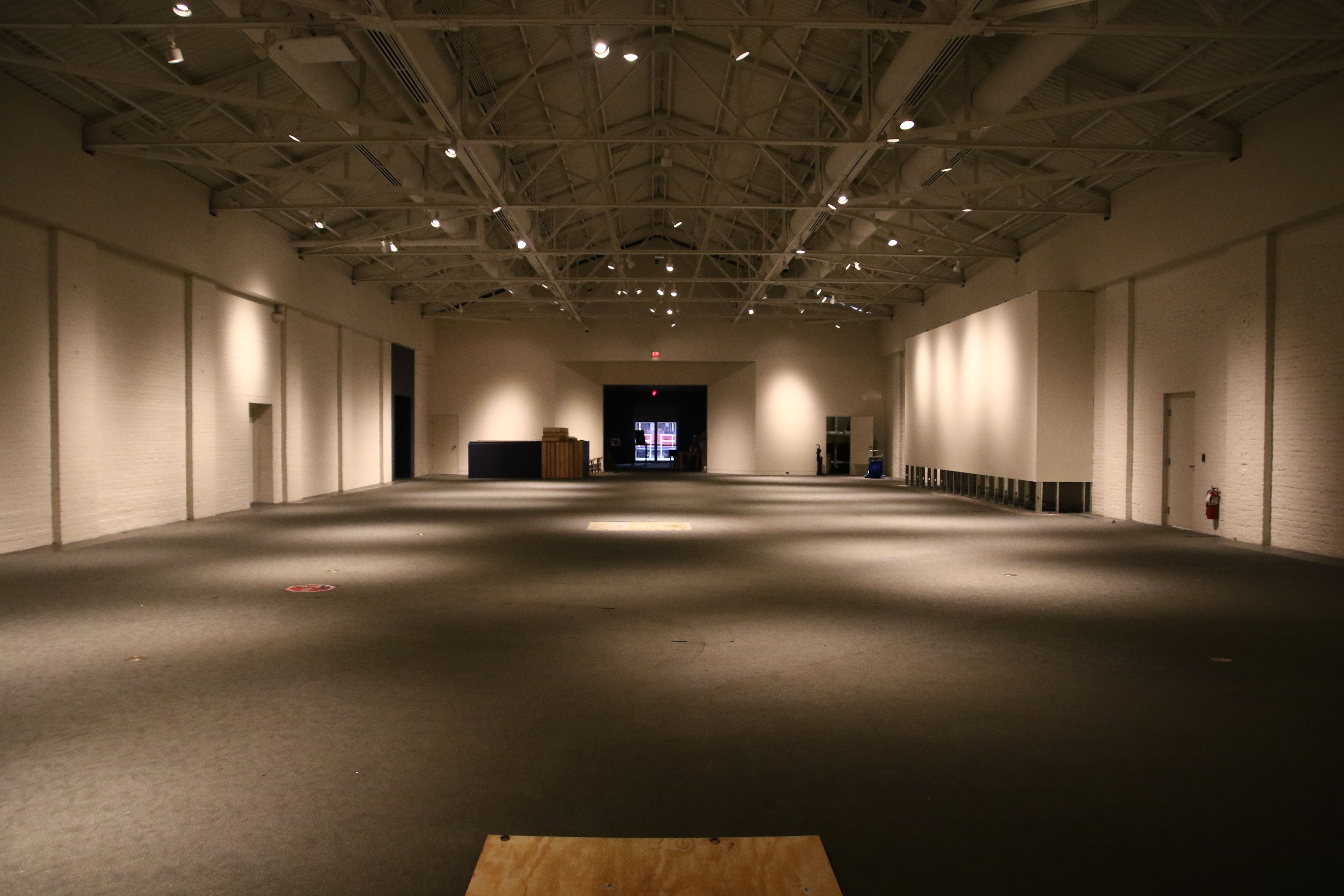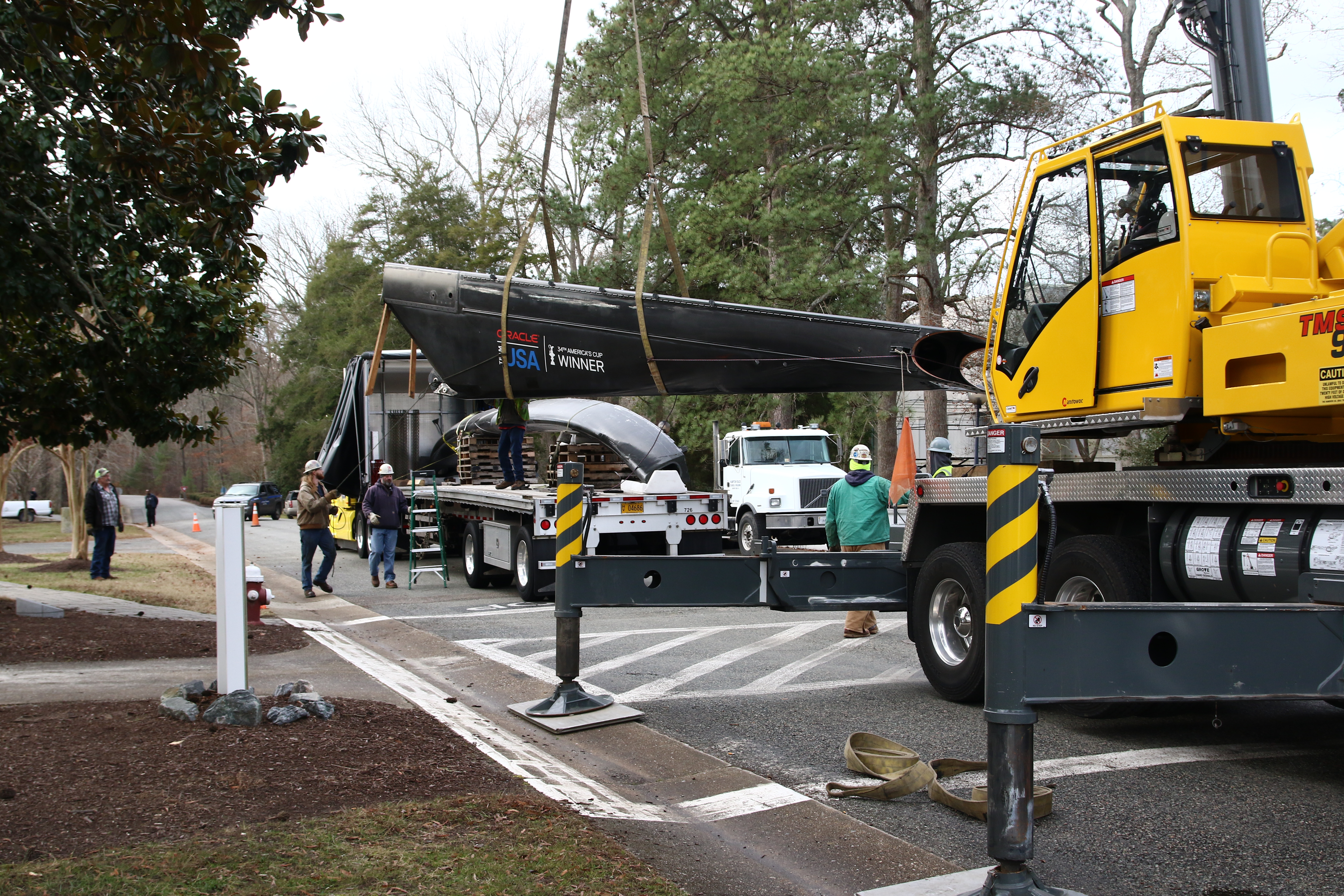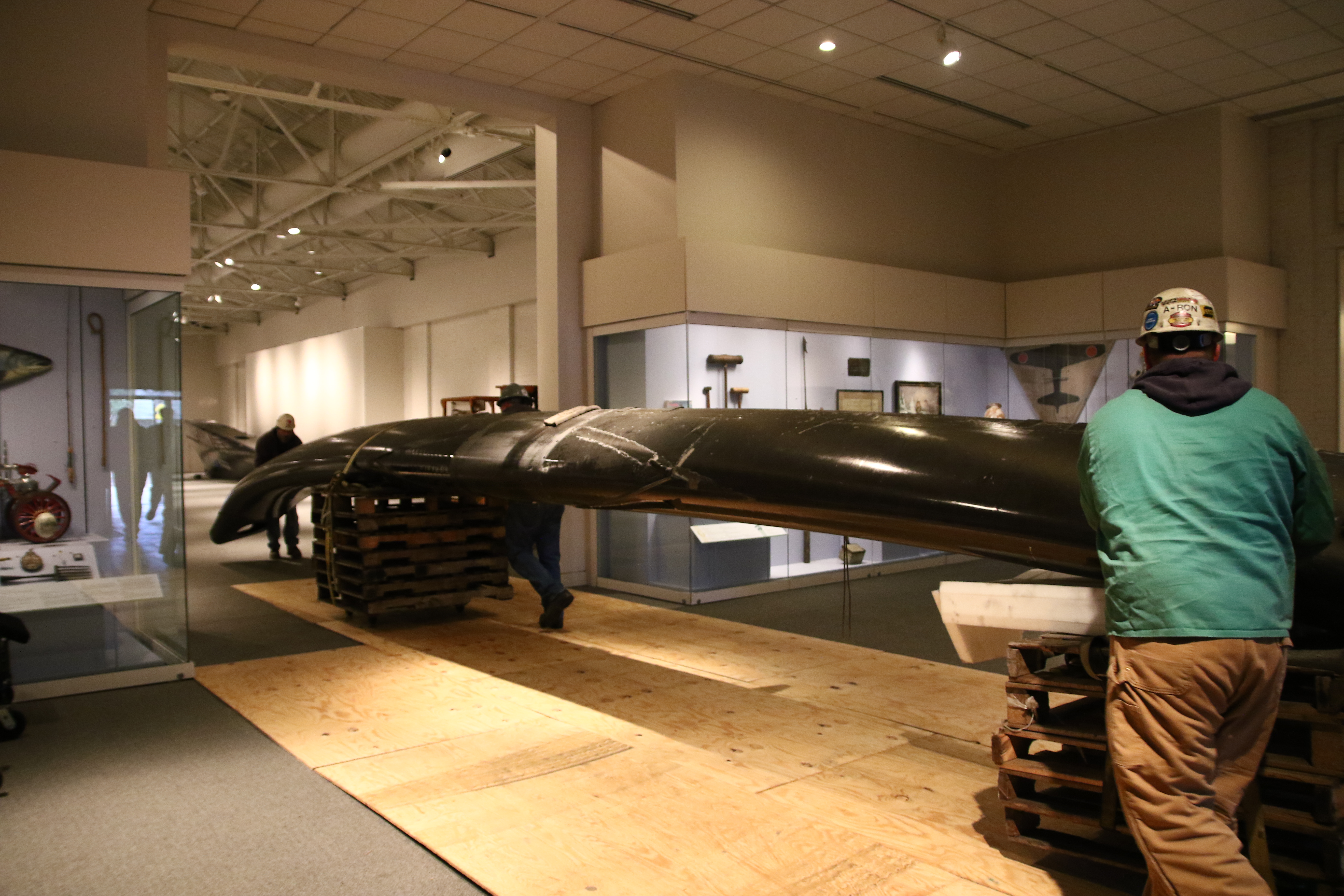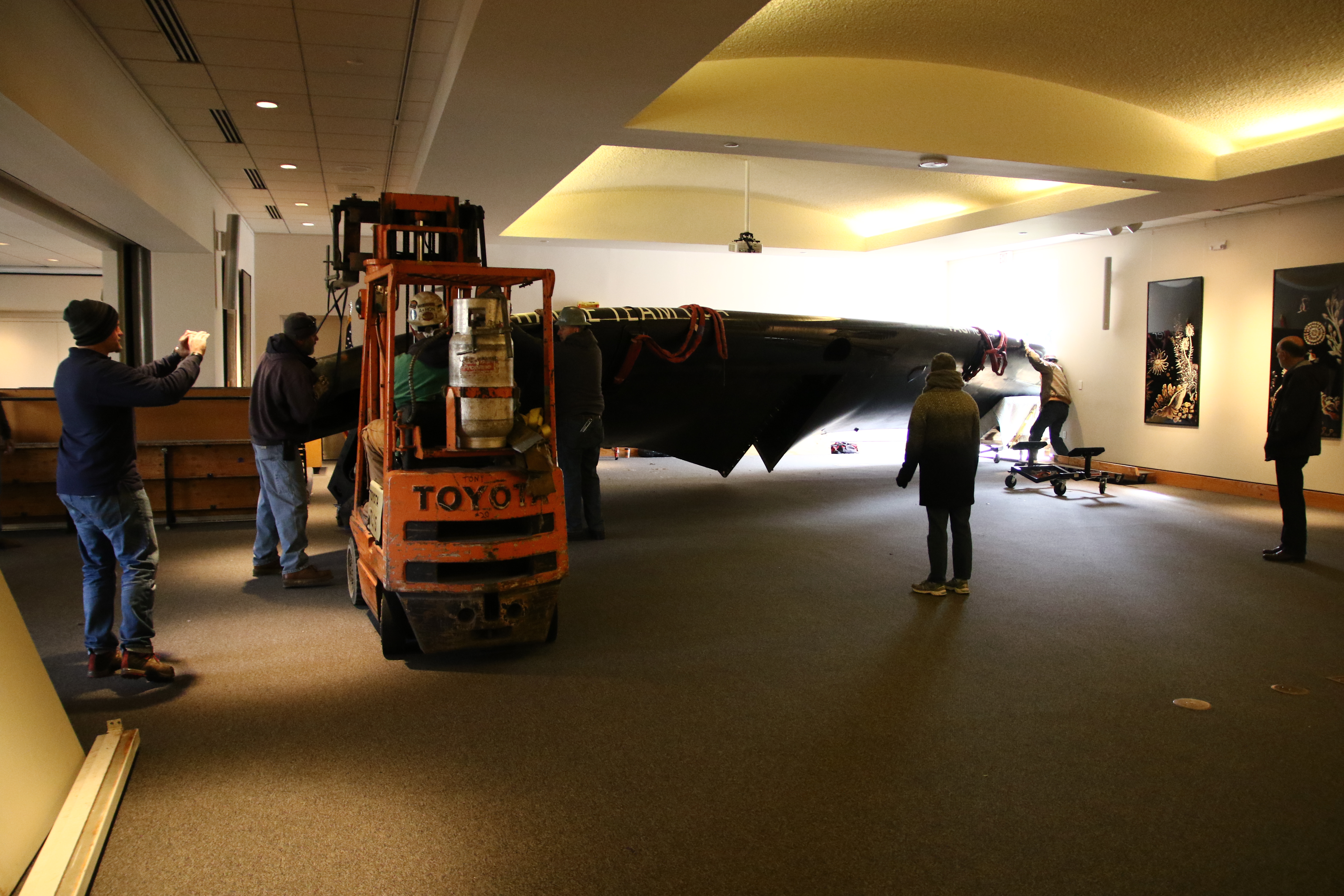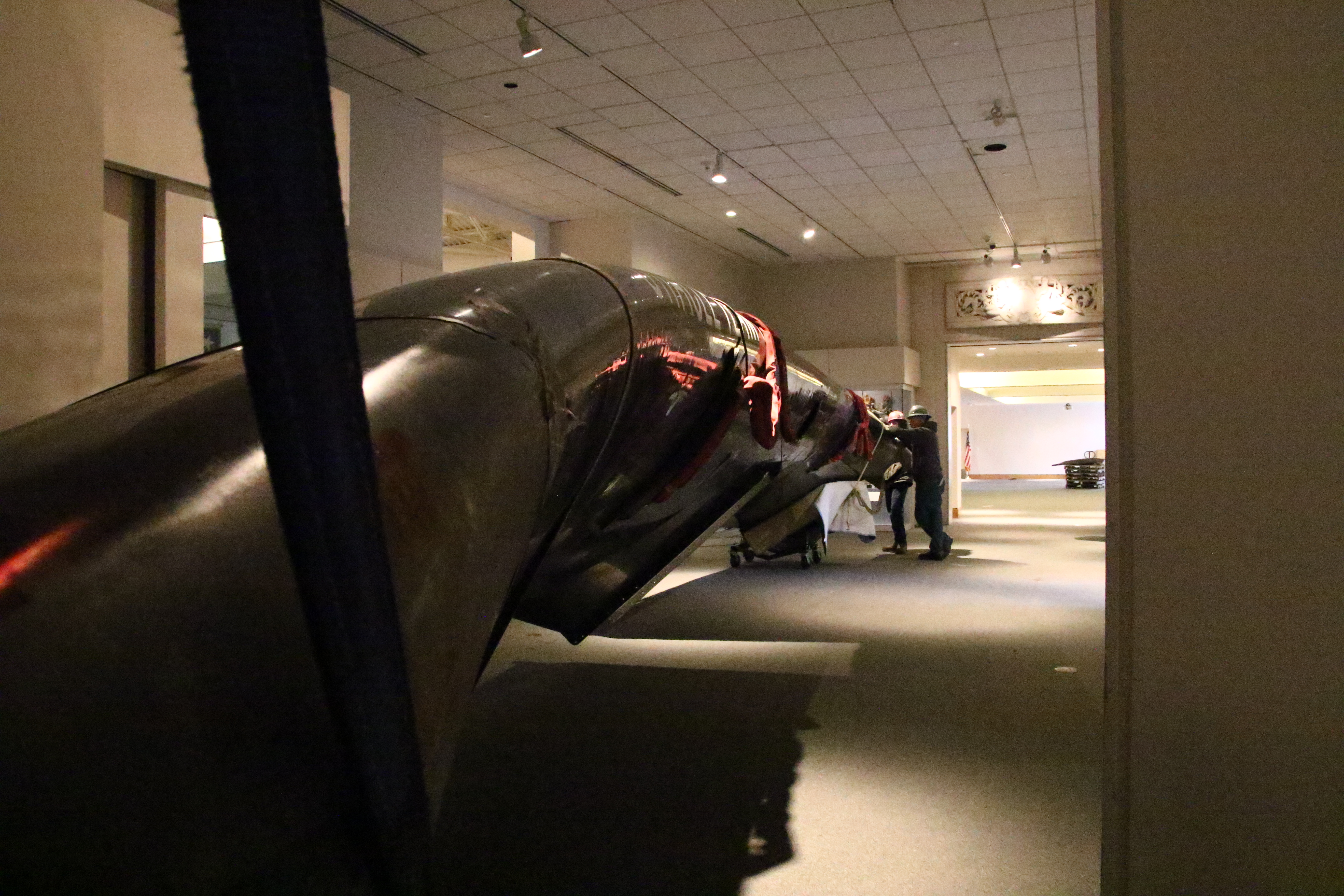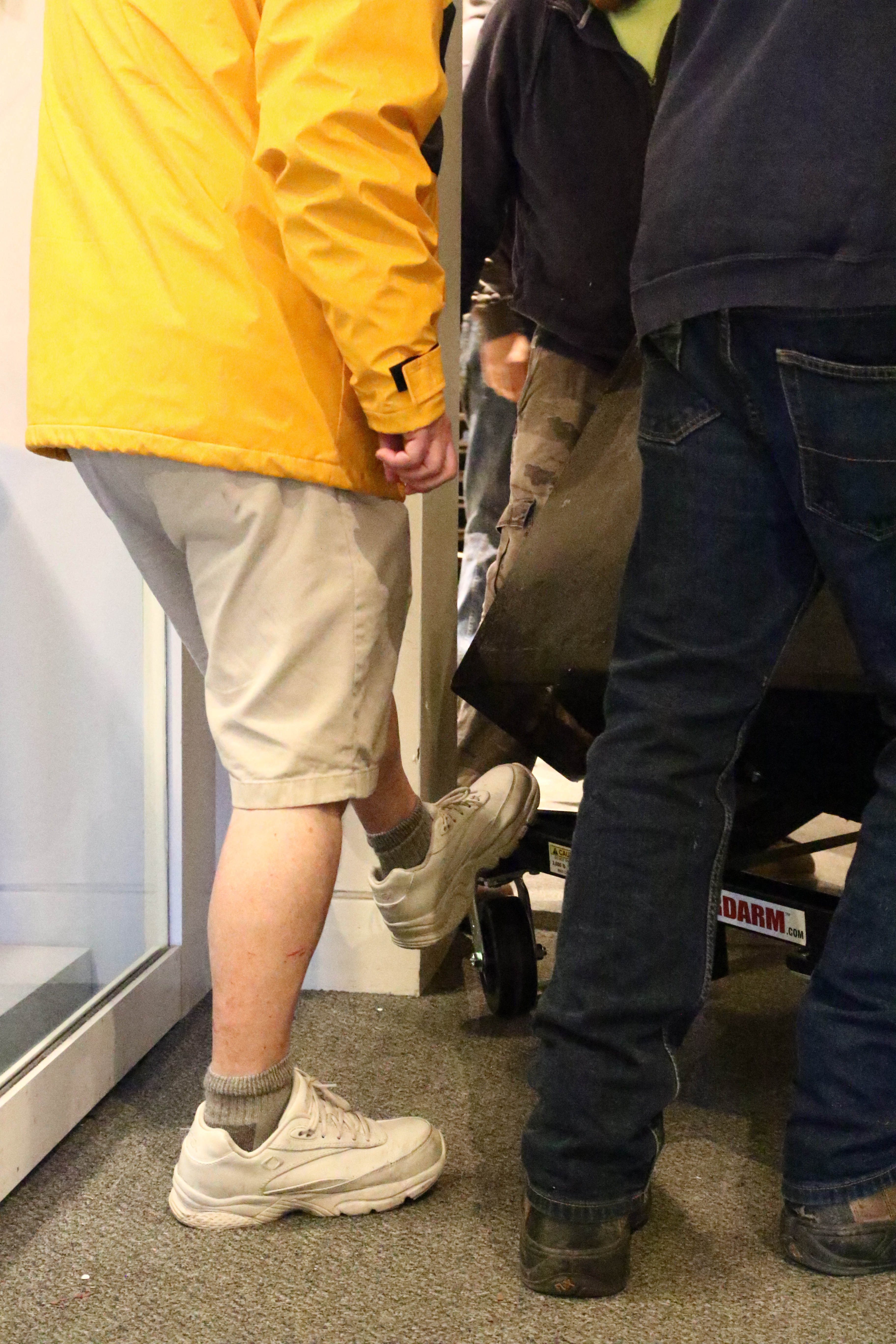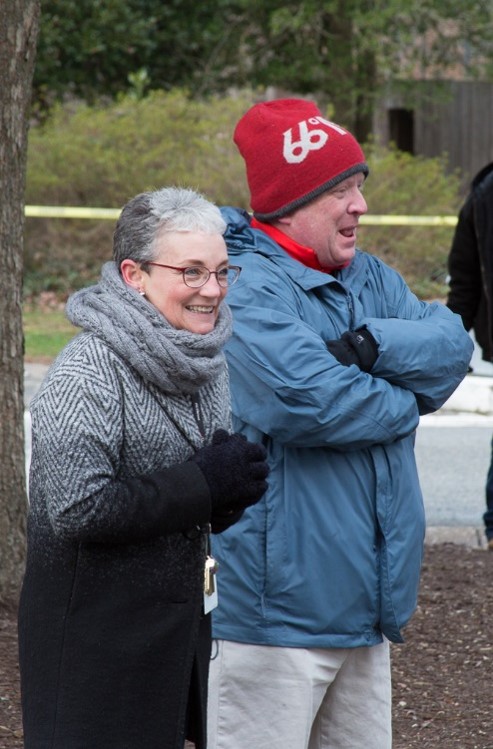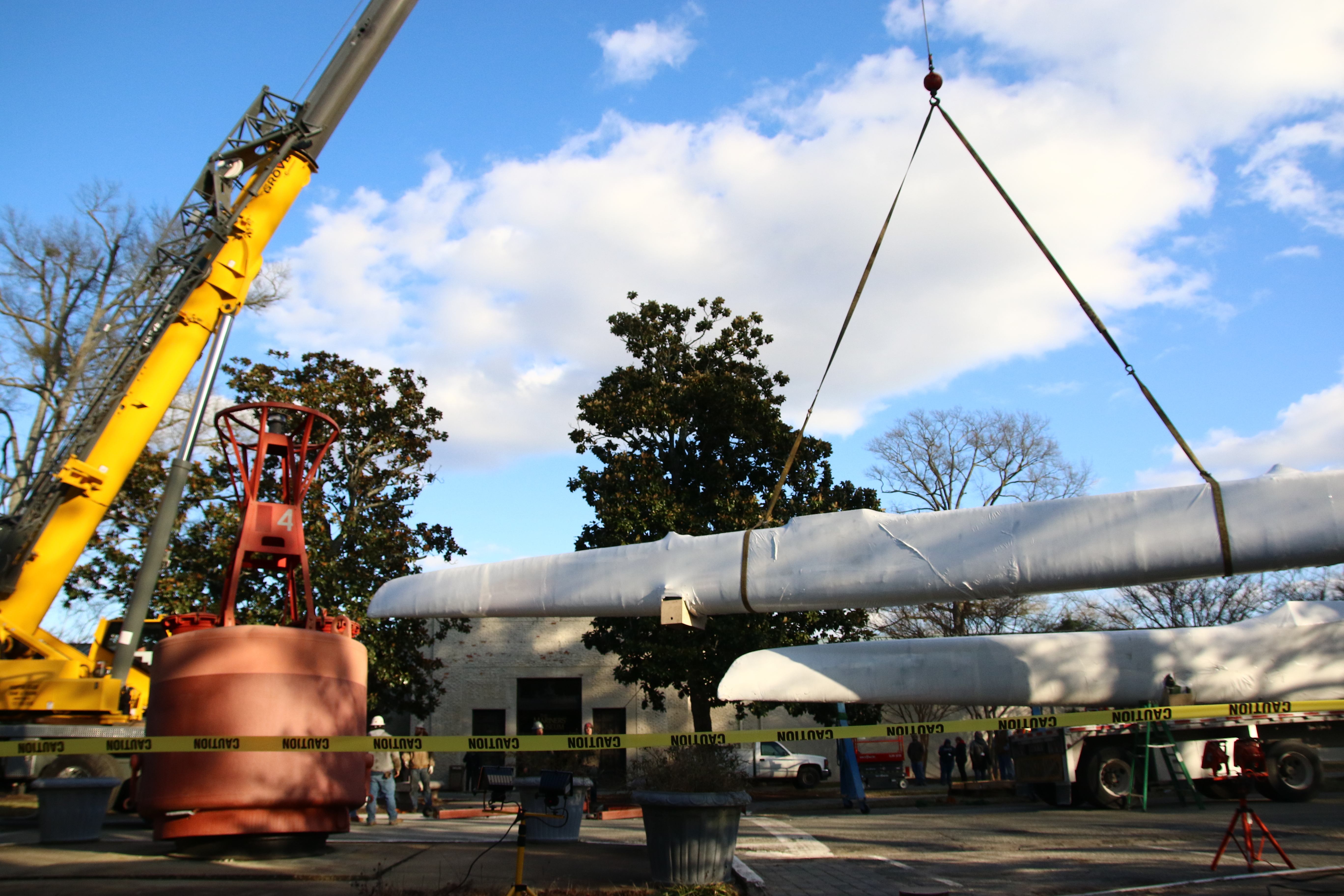In my April 21st post I discussed the gallery moves that had to take place before we could install the AC72 in the Great Hall. The final stage of the process involved removing several large carvings that were mounted near the ceiling and the steeple-type engine from the tug William Stewart—which had to be turned on its side to get it out of the building. These moves happened on January 23rd giving us a nice blank slate to work with!
On the morning of January 30th the crew from Hampton Roads Crane and Rigging arrived and began the process of unloading the two trucks that had arrived on the 28th. Besides craning the objects off the trucks they also oversaw the process of getting everything into the building. If you’ve watched the videos you’ll notice we are all bundled up like Eskimos—it was bitterly cold all day and we had to deal with snow flurries most of the morning.
Our plan was to get everything into the building through the Museum’s Business Entrance because that entry point offered a straight shot into the gallery space where the boat would be displayed. The first truck held the central pod and stern crossbeam and the second truck carried the forward crossbeam and daggerboards.
It only took about four hours to get the trucks unloaded and we managed to get nearly all the parts into the building. Notice I didn’t say “all the parts.” Unfortunately the forward crossbeam didn’t quite fit. After a quick conference we decided to bring the crossbeam through a large set of doors in our nearby conference room. While there was plenty of room to get the piece through the doorway, using this entry point meant we had to turn a corner to get the crossbeam into the gallery—not an easy feat with something nearly 46′ long, over 7′ wide, that’s curved and weighs about 2200lbs!
On our first attempt, we took the crossbeam most of the way through the gallery space adjacent to the Business Entrance hoping to eliminate the need to make a 90 degree turn but the darn thing was to big. We headed back into the conference room and flipped the crossbeam 180 degrees so that its interior curve could hug the gallery wall—which is actually a custom built glass case. To get the crossbeam around the corner we had to open the doors of the case as wide as possible, deinstall the objects, and then stand the crossbeam up on its edge almost to the tipping point.
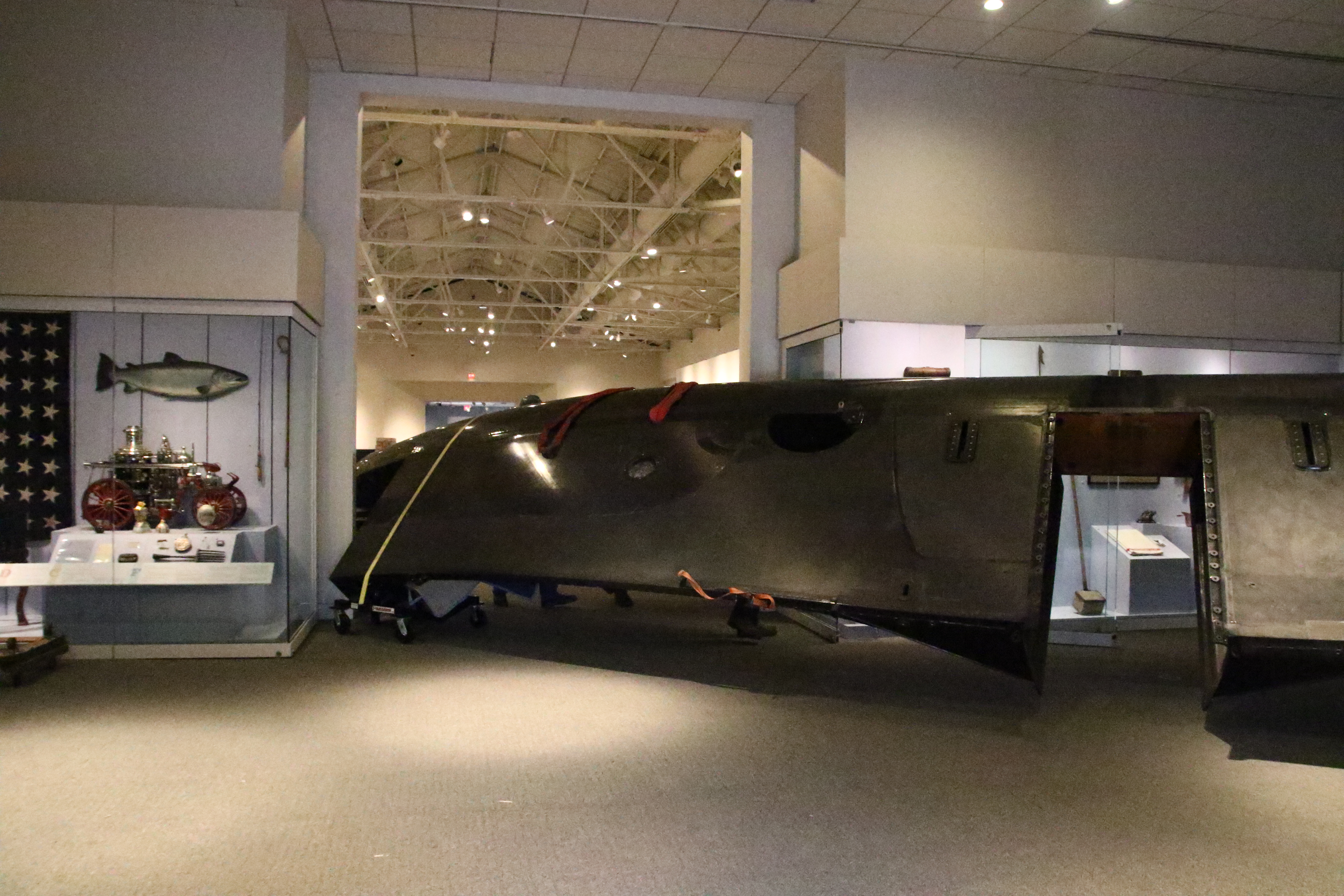
It took two or three hours to do and I think everyone was holding their breath the entire time, but we did manage—thanks to the team at HRCR—to get the crossbeam into the Great Hall. After the trauma of moving the forward crossbeam the unloading of the two hulls was almost anticlimactic—not really we were so freaking excited we couldn’t stand it!
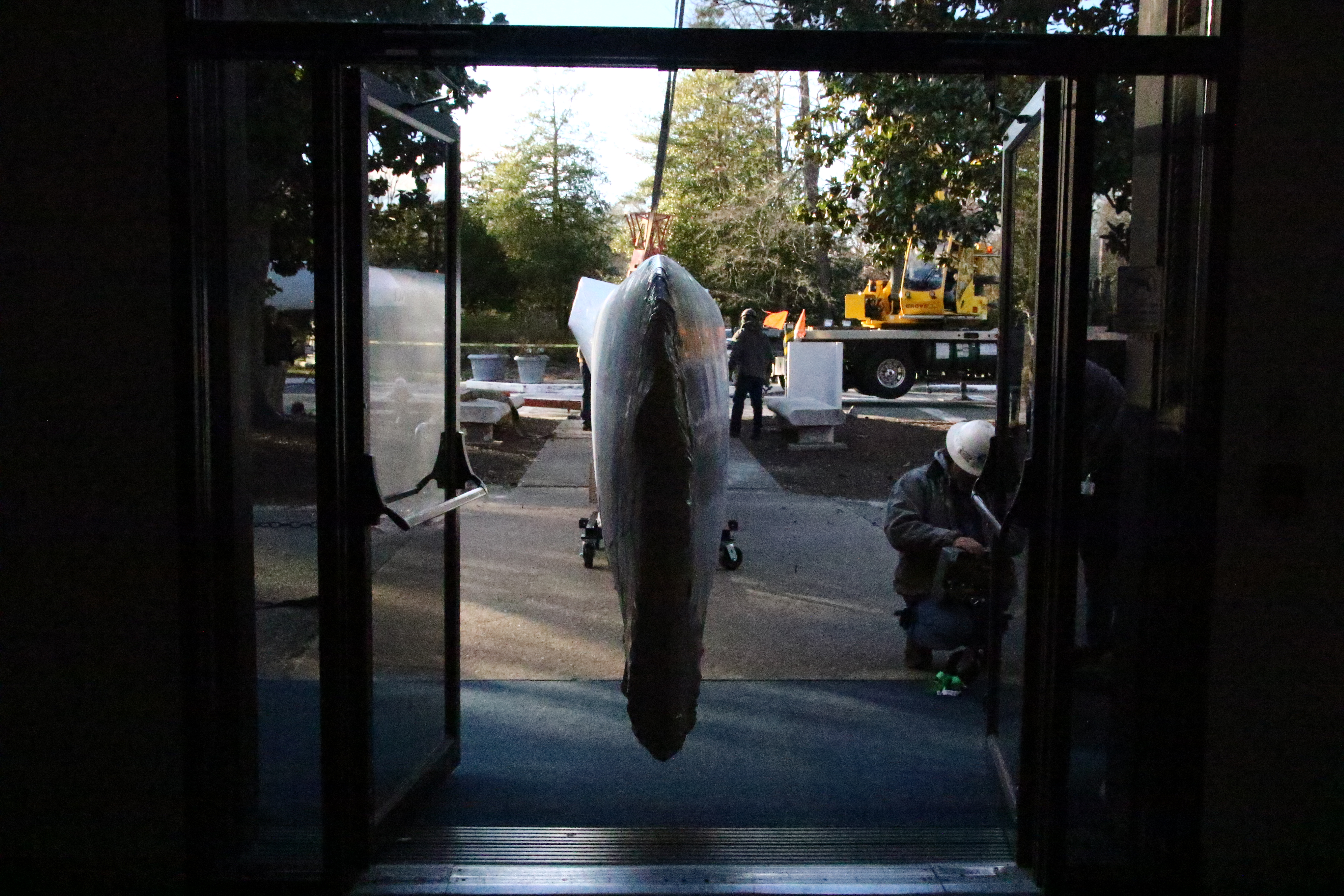
All in all, the entire process took about eleven hours and we couldn’t have done it without the great team at Hampton Roads Crane and Rigging. Jim Speegle, Chuck and all the guys at HRCR are consummate professionals and even when we run into a problem—like an object that’s a little bigger or heavier than we expected, I never have to worry that the job won’t get done.
Next up…a multi-part series on how we assembled a 72′ hydrofoiling catamaran in the Great Hall.
